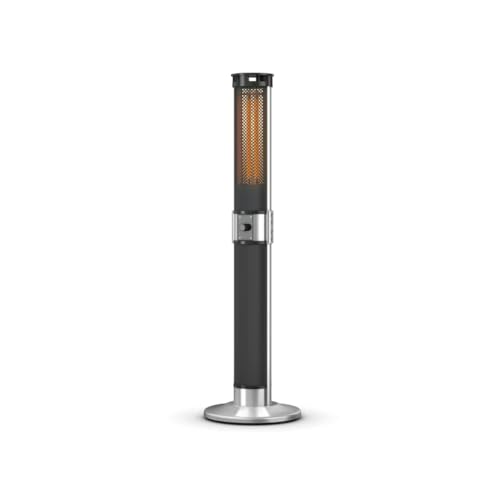A Comprehensive Guide to Purchasing Patio Heaters
As outdoor home become increasingly popular, the demand for patio heaters has actually surged. These devices allow property owners to extend their outdoor pleasure well into the cooler months. However, with a multitude of options offered on the marketplace, selecting the right patio heater can seem frustrating. Patio Electric Heater Supplier aims to provide insightful info to assist buyers make informed choices, covering types, functions, factors to consider, and answers to regularly asked questions.
Kinds Of Patio Heaters
Patio heaters been available in different styles and designs, accommodating different outdoor spaces and choices. Here's an overview of the most typical types:
| Type | Description |
|---|---|
| Propane Patio Heaters | Portable heaters that utilize lp tanks. They are ideal for locations without electrical power and are easy to move. |
| Gas Patio Heaters | Linked straight to a natural gas line, these heaters are stationary but supply unlimited heating without the requirement to replace tanks. |
| Electric Patio Heaters | Plugged into an electric outlet, they are energy-efficient, simple to use, and require very little upkeep. Electric Garden Heating UK come in various heating abilities. |
| Infrared Patio Heaters | Use convected heat technology to warm specific locations and people instead of the air. This can be especially reliable in windy conditions. |
| Fire Pits | Not traditional patio heaters, fire pits can serve dual functions of heating and offering a space for roasting marshmallows or enjoying a campfire ambiance. |
Aspects to Consider When Purchasing Patio Heaters
When searching for a patio heater, a number of important factors must be considered to make sure a notified decision. Here are key functions to assess:
Heat Output:
- Patio heaters differ in BTU (British Thermal Units); greater BTUs equate to more heat.
- For typical outdoor spaces, consider heaters with an output of 40,000 - 50,000 BTUs for enough warmth.
Fuel Type:
- Decide in between gas, gas, or electric based on schedule and convenience.
- Consider the initial expense and continuous fuel costs, as they can vary significantly.
Mobility:
- Determine whether a portable heater or a more permanent solution is required based on your outdoor space.
- Portable heaters offer flexibility, while gas heaters are more stable however require installation.
Safety Features:
- Look for functions like automatic shut-off switches, tip-over protection, and heat-resistant materials.
- Security should be a paramount concern, specifically in windy areas or around children and pets.
Design and Aesthetics:
- Consider the style of the heater to guarantee it complements your outdoor decor.
- Select in between standard and contemporary designs for a more specified visual.
Reduce of Use and Maintenance:
- Assess how simple the heater is to fire up, adjust the heat settings, and tidy after use.
- Electric designs generally require less upkeep compared to lp or natural gas units.
Advantages and disadvantages of Common Patio Heater Types
| Type | Pros | Cons |
|---|---|---|
| Gas Patio Heaters | Portable, high heat output, easy to establish | Requires tank replacement, can be costly to run |
| Gas Patio Heaters | Limitless heating, low operating expense | Needs expert installation |
| Electric Patio Heaters | Energy effective, essentially maintenance-free | Minimal range, reliant on electrical power supply |
| Infrared Patio Heaters | Instant heating, very little wind effect | Usually lower BTU output, particular location protection |
| Fire Pits | Atmosphere and discussion starter, double purpose | Requires wood or gas, can be less effective as a heater |
FAQ about Patio Heaters
1. How much heat does a patio heater provide?
The heat output of patio heaters is determined in BTUs. Most outdoor heaters produce in between 30,000 and 50,000 BTUs, adequate to warm a normal outdoor seating location.
2. Can patio heaters be used in the rain?
While some patio heaters are designed to be weather-resistant, it is typically advisable to keep them protected during rainy conditions to prevent damage and ensure safe operation.
3. Do patio heaters require much maintenance?
Most patio heaters do not require comprehensive upkeep. Routine cleaning and looking for gas leaks in lp or natural gas designs are suggested to guarantee longevity and safety.
4. How long do gas tanks last in patio heaters?
A standard 20-pound gas tank can last between 10 to 12 hours on high settings, depending on the heater's BTU output.
5. Can I use an electric patio heater inside?
Electric patio heaters are typically created for outdoor usage; nevertheless, if they are rated for indoor usage, they can be utilized in well-ventilated locations. Constantly guarantee precaution are followed.
In summary, purchasing a patio heater includes considering various factors such as heat output, fuel type, portability, safety functions, and aesthetic appeals. By comprehending the various types available and the pros and cons related to each, purchasers can confidently pick a patio heater that best fits their outdoor living space. Given the flexibility and comfort these heaters offer, they can change any outdoor area into a warm and inviting retreat for friends and family to gather, even during cooler months. Whether enjoying a cup of tea on a chilly night or hosting a vibrant gathering, a patio heater can make all the difference.

